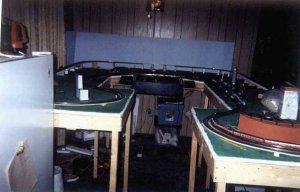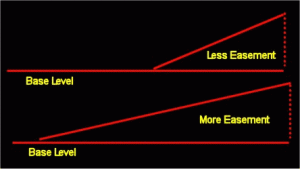Everything that I have read, both here and from other sources say that you shouldn't start an incline on a curve. With my current layout plan there is a place that I can't figure out any way to put a straight piece to start the incline without reducing the radius of the curve by a substantial amount. Right now it has a radius of 25 1/2" and is in a difficult location to access. Is there any way that I can do this safely?
I guess my question is, which is the better route to go, a straight shot at a tighter curve or a gentle incline into a wider curve?
If I can get away without the straight piece the design works better but if I gotta then I gotta.
Clark
I guess my question is, which is the better route to go, a straight shot at a tighter curve or a gentle incline into a wider curve?
If I can get away without the straight piece the design works better but if I gotta then I gotta.
Clark



